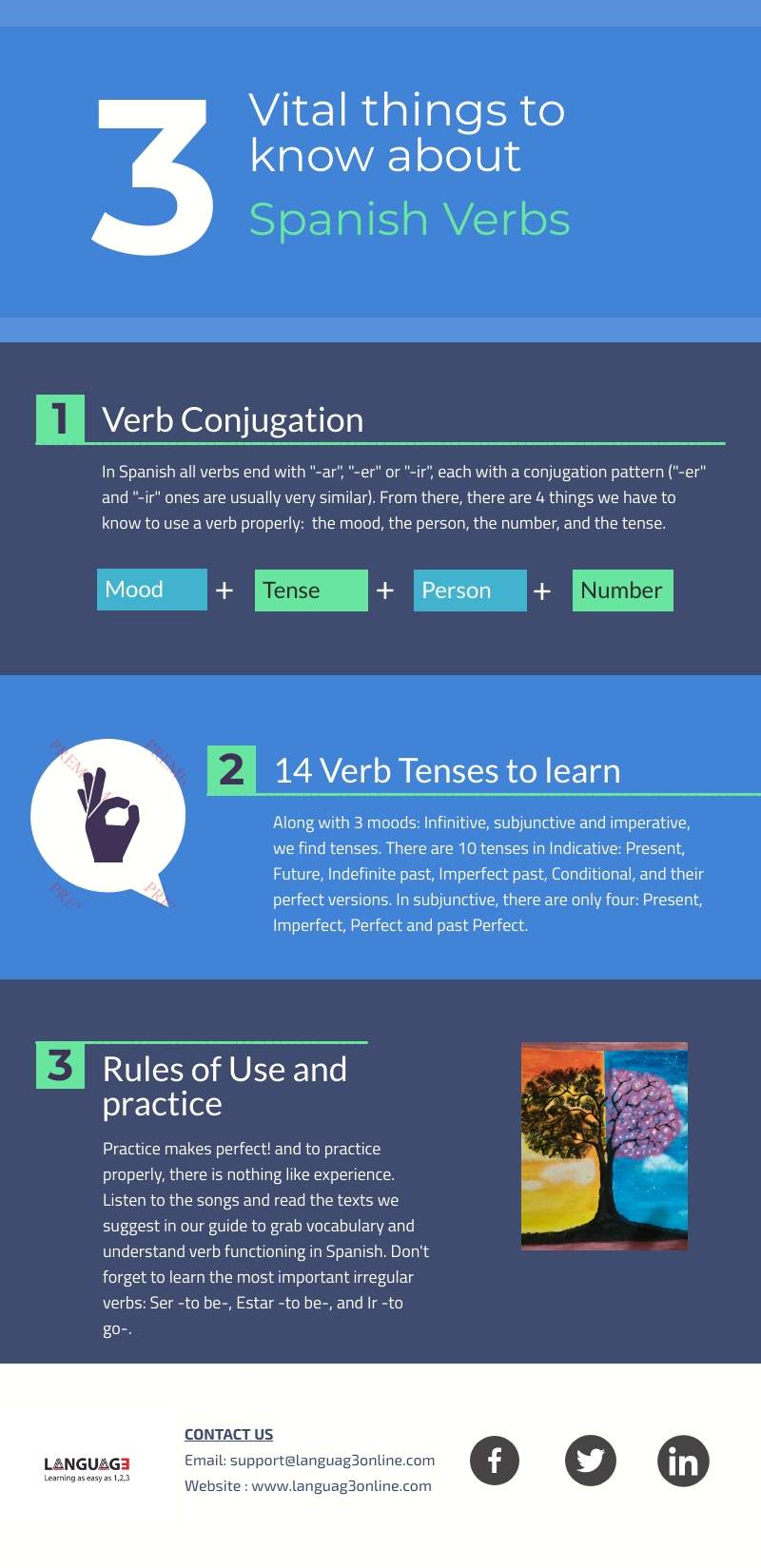The Spanish verb system is a headache for students of Spanish as a second language. But it doesn’t mean it cannot be simplified, creating a simple schematic that helps us learn and understand it. All variations made to a verb in Spanish are related to a reduced set of features: – Grammatical Mood – Tense – Person – Number – Ending of the infinitive form So if we know exactly how all these features work, we will be able to successfully build a sentence or understand spoken or written Spanish, even if the verb usage is advanced.
The grammatical mood is related to syntax (structure) issues that usually have little meaning beyond functionality. In Spanish, there are three: Indicative, Subjunctive and Imperative. Tense is a completely different story, with up to 14 different tenses, it is in this section where the memorization hard work is.
Person and number are pretty straightforward, involving learning conjugations for 3 persons of singular (yo, tu, el/ella), and 3 persons of plural (nosotros, vosotros, ellos). And the ending of the infinitive form will tell us what pattern to use across the whole process (there are three of them, ‘ar’, ‘er’ and ‘ir’.

